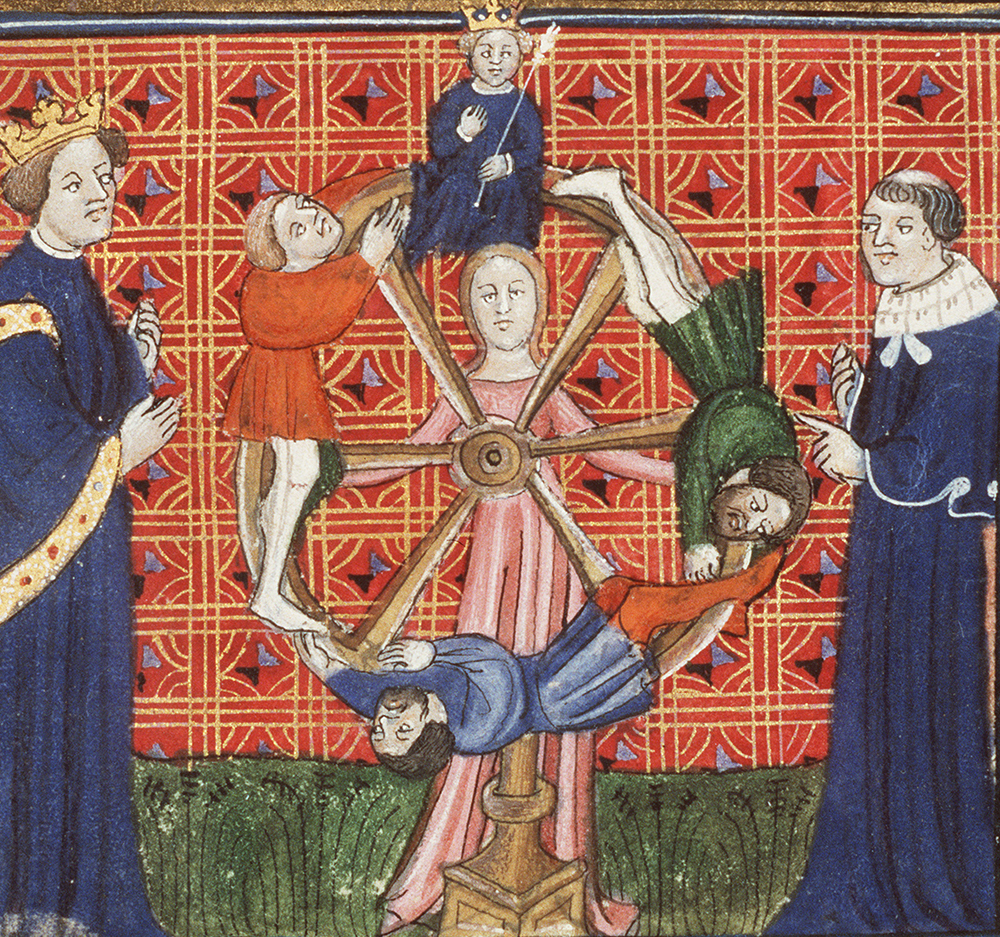What happens in this picture ?!
This picture shows the Wheel of Fortune. You've probably seen a Wheel of Fortune at the fair, or on a television game show if you're a bit older. You spin the wheel and win a big or a smaller prize depending where it stops.
What happens in this picture ?!
This picture shows the Wheel of Fortune. You've probably seen a Wheel of Fortune at the fair, or on a television game show if you're a bit older. You spin the wheel and win a big or a smaller prize depending where it stops.
Fortune
These wheels have been around for ages, but this miniature is a very special example. Lady Fortune herself is depicted behind the wheel. She is spinning the wheel to determine the fate of the king on the left, the priest on the right and everyone in between. So who will end up at the top and win the grand prize? And who will find themselves at the bottom? The person at the top wins happiness and success, but you definitely don't want to be the one at the bottom. Lady Fortune isn't bothered; she keeps her eyes closed, because when it comes to fate, everyone is equal.
📖
The title of this book translates as Memorable deeds and sayings. It was produced in Paris around 1413. It is a copy of a Roman text written by Valerius Maximus. According to Valerius, the book contained the most valuable lessons from Roman history. The books were used as textbooks in the Middle Ages. And this story was a typical mediaeval lesson: You are not in charge of your own fate. A twist of fate can make the poorest of beggars filthy rich .
